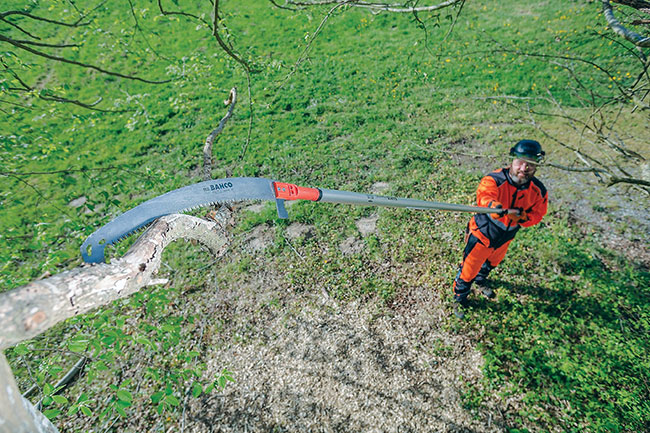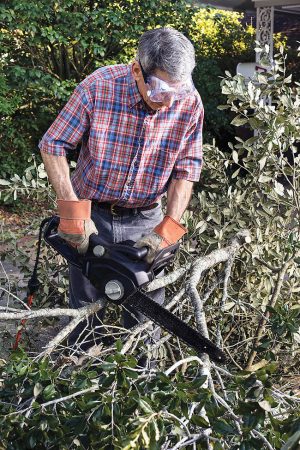
News
Handheld Equipment
Profiles
Health and Safety: Tree work demands utmost in safety
July 10, 2020 By By the CCOHS
 Helmets, visors, eye protection and other safety apparel are important protective equipment when pruning trees.
Helmets, visors, eye protection and other safety apparel are important protective equipment when pruning trees. Servicing trees can be dangerous work. Workers have been killed and hurt from falls, electrocutions and by being struck by trees and falling objects, which is why arborists are specially trained and should be certified. The arborists who do this work keep busy with the thousands of trees in need of trimming, felling, and removal, in cities, towns, and private properties across Canada.
Tree service employers are required to provide a safe work environment. This obligation includes having safe work procedures in place, informing workers of any and all hazards of the job, and providing protective equipment and training for workers to ensure they can do their job safely.
Tips for employers
- Ensure that all tools, lifts and ladders are well-maintained and in good working condition, and appropriate for the tree size.
- Provide appropriate personal protective equipment and ensure workers use it correctly.
- Ensure worksites are checked prior to work being done and that any hazards are addressed.
- Ensure work is at least 10 feet away from electric power lines – or call the power company to de-energize and ground the line.
- If rigging is necessary, ensure workers have the training and resources required to do it safely.

Wear eye protection to keep propelled particulates from causing injury. OPEI photo
Tips for workers
Workers have the right to say something about safety concerns without fear of punishment. If you see hazards or an injury, let your supervisor know. You also have the right to comprehensive training and information. Additional tips for workers include:
- Do not trim trees in dangerous weather conditions.
- Always use personal protective equipment (PPE), such as head, hearing, and eye protection and footwear protection with slip-resistant soles, as well as approved safety belts, lifelines, and leather gauntlet gloves, when required.
- Choose close-fitting, long-sleeved clothing.
- Assume that all power lines are energized and can electrocute a person at any time.
- If you will need to climb or use lifts, ensure that you can see and hear the other ground and elevated workers.
- Secure a drop zone with cones that is at least two times the height of the tree.
- Never turn your back on falling trees.
- Tree care work safety is the responsibility of employers and workers. Learn what you need to do and take the time to keep tree felling safe.
The Canadian Centre for Occupational Health and Safety (CCOHS) promotes the total well being of workers in Canada by providing information, training, education, systems and solutions that support health and safety programs and injury and illness prevention. www.ccohs.ca
Print this page